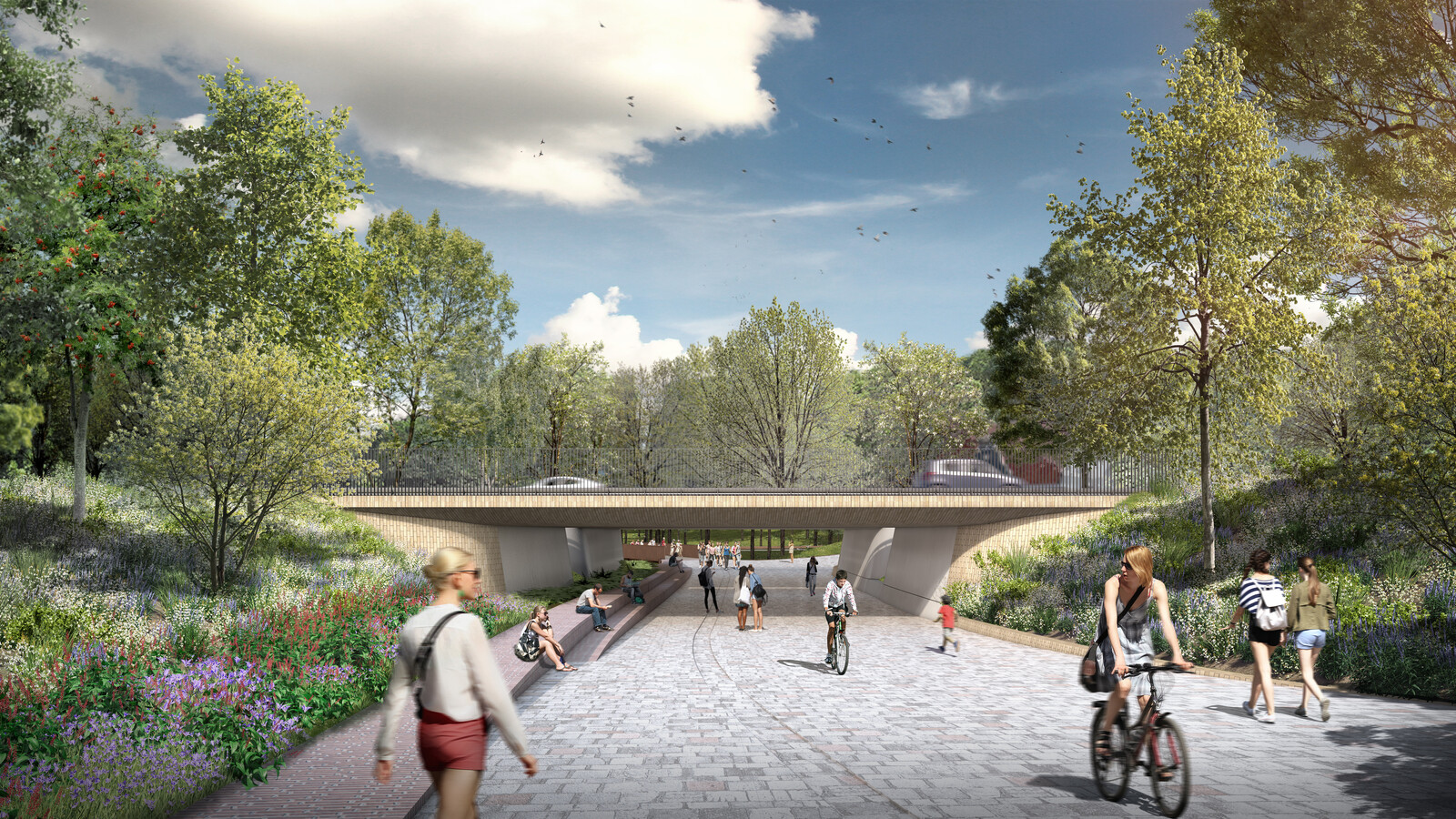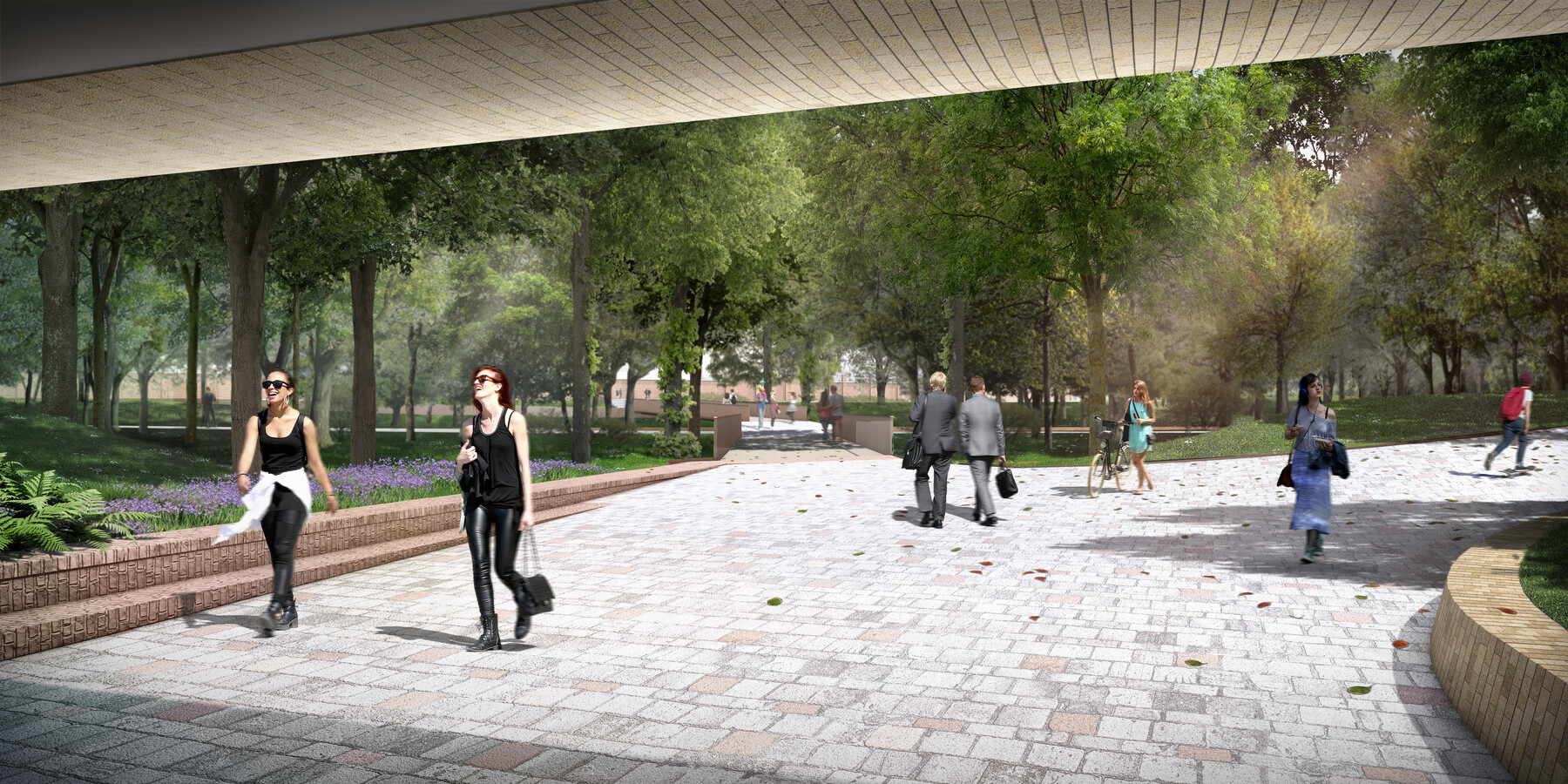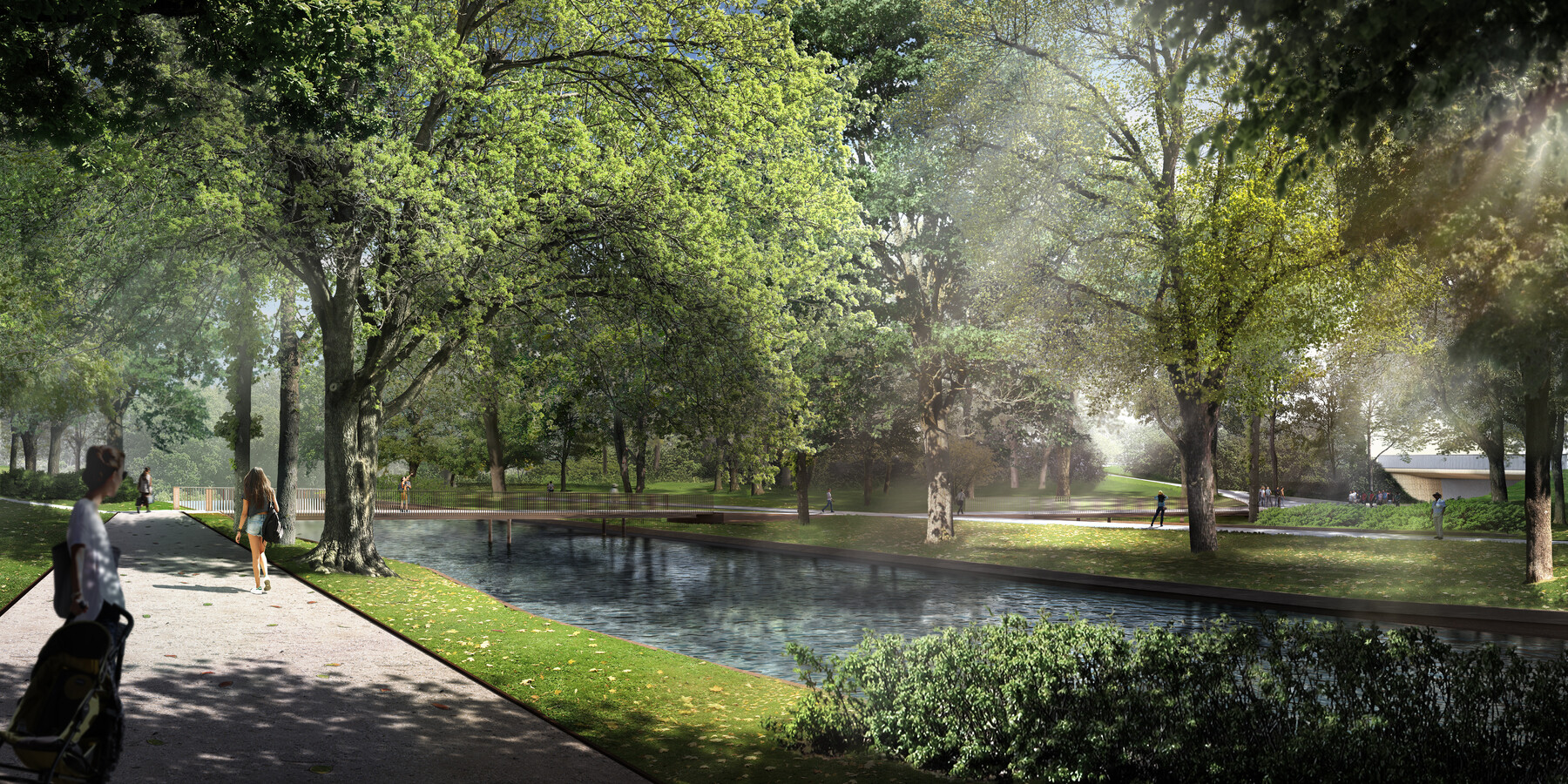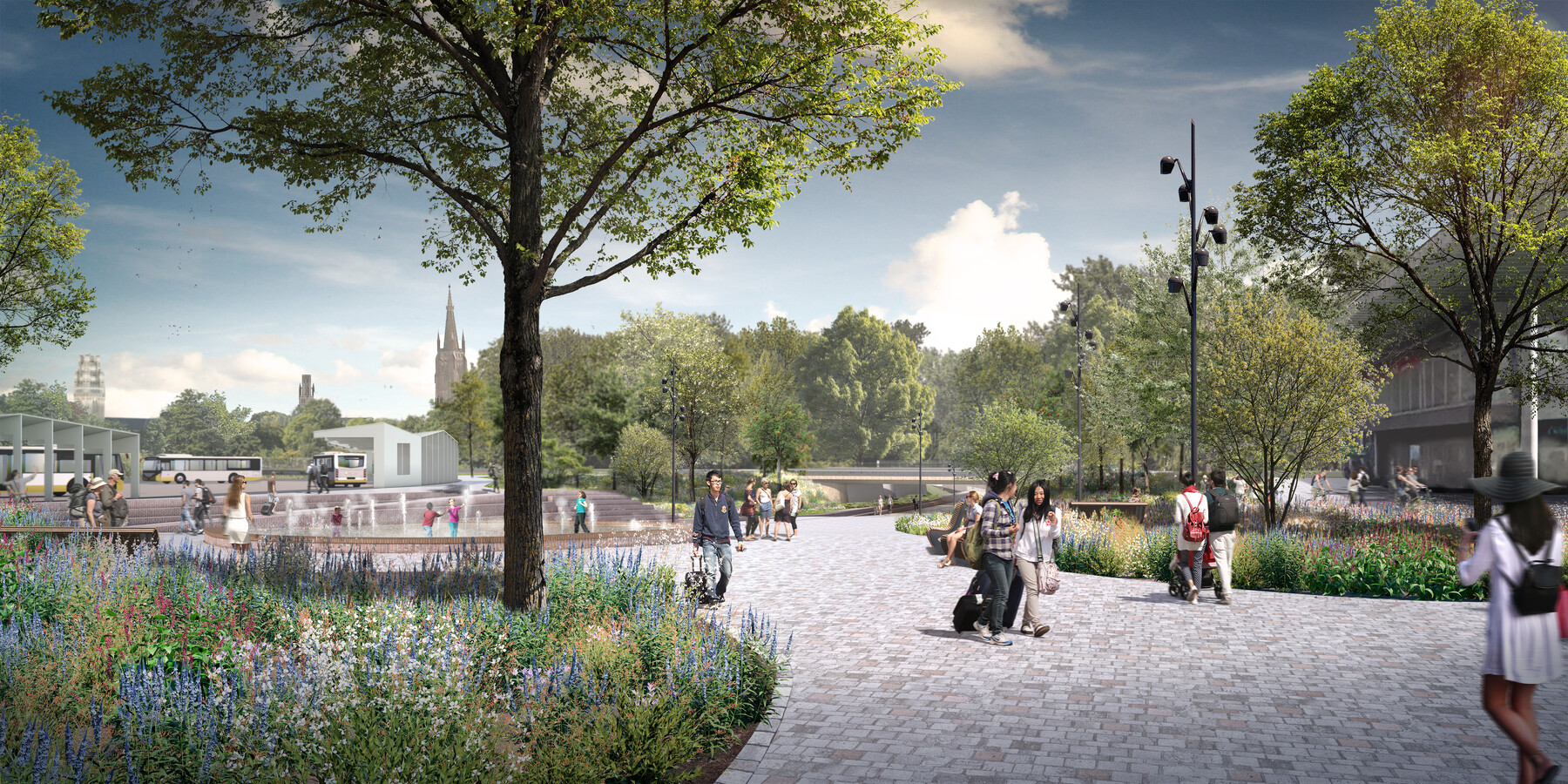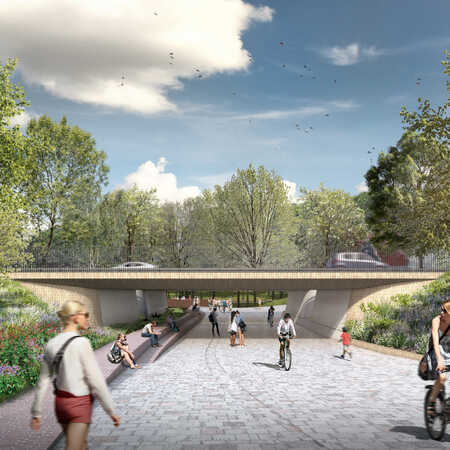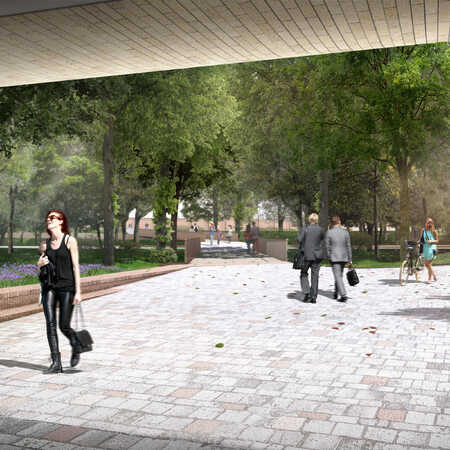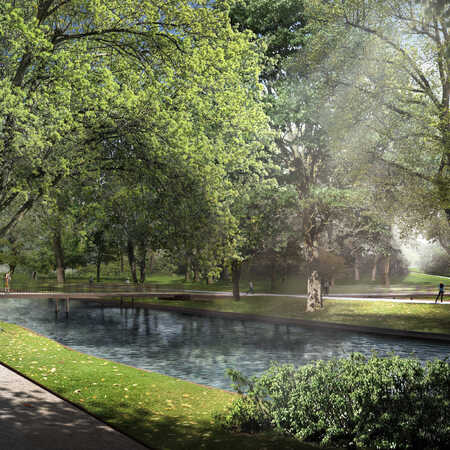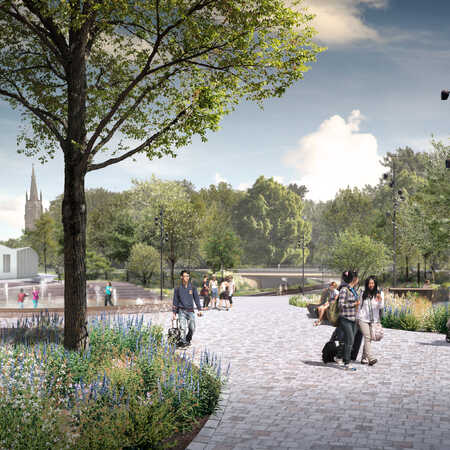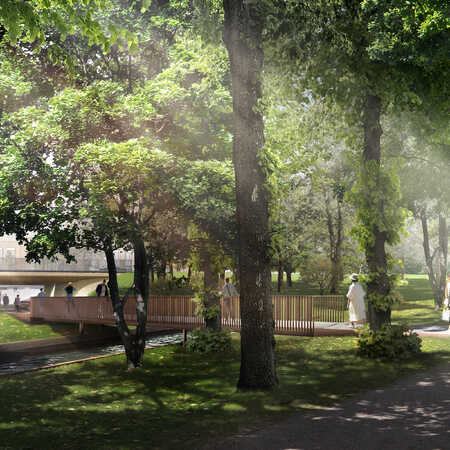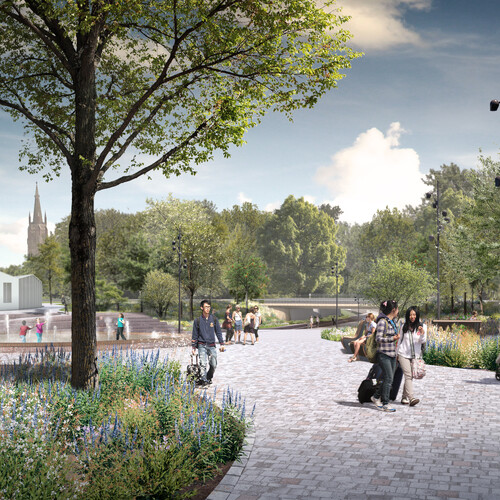The area around the station will be given a greener character, with green elements around a new fountain, giving it all the appeal of a park. From here, visitors will have a delightful view of the town and the three tallest historical buildings of Bruges. A broad greenway that slopes gently downwards leads to the wide Vesten Passage under the ring road, which has been designed in polished concrete and yellow brick. This underpass presents an open and inviting view that includes the park beyond, which is clearly visible as a result of the slope and the width of the path, at more than nine metres. The proportions, the curved retaining walls and the traditional Bruges brickwork evoke associations with a gatehouse.
The Vesten Passage also functions as a connecting element for flora and fauna, linking them with the spacious green zone to the north, which is planted with species suited to the damp, shady environment. There is plenty of space for cyclists and pedestrians to enter Bruges through this gateway.
To relieve the Oostmeers, where the sheer number of visitors making their way to the town centre causes inconvenience, and to lead visitors straight into the heart of the historic city, the route has been moved eastwards. Instead of along the Oostmeers, they will walk through the park, where two slim bridges will take them over the Vesten. These have been designed to merge as far as possible into the landscape, with minimal abutments, modest columns and parapets made of Corten steel. They have been carefully positioned in the park to spare the existing mature trees.
